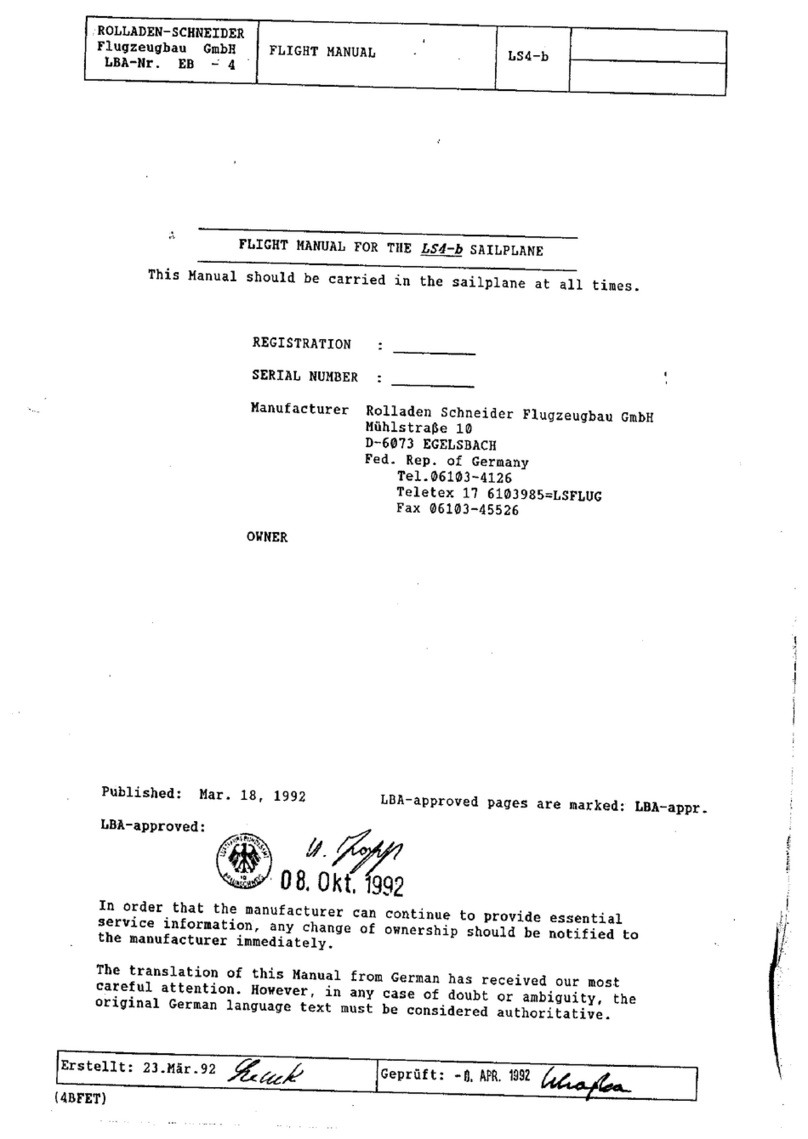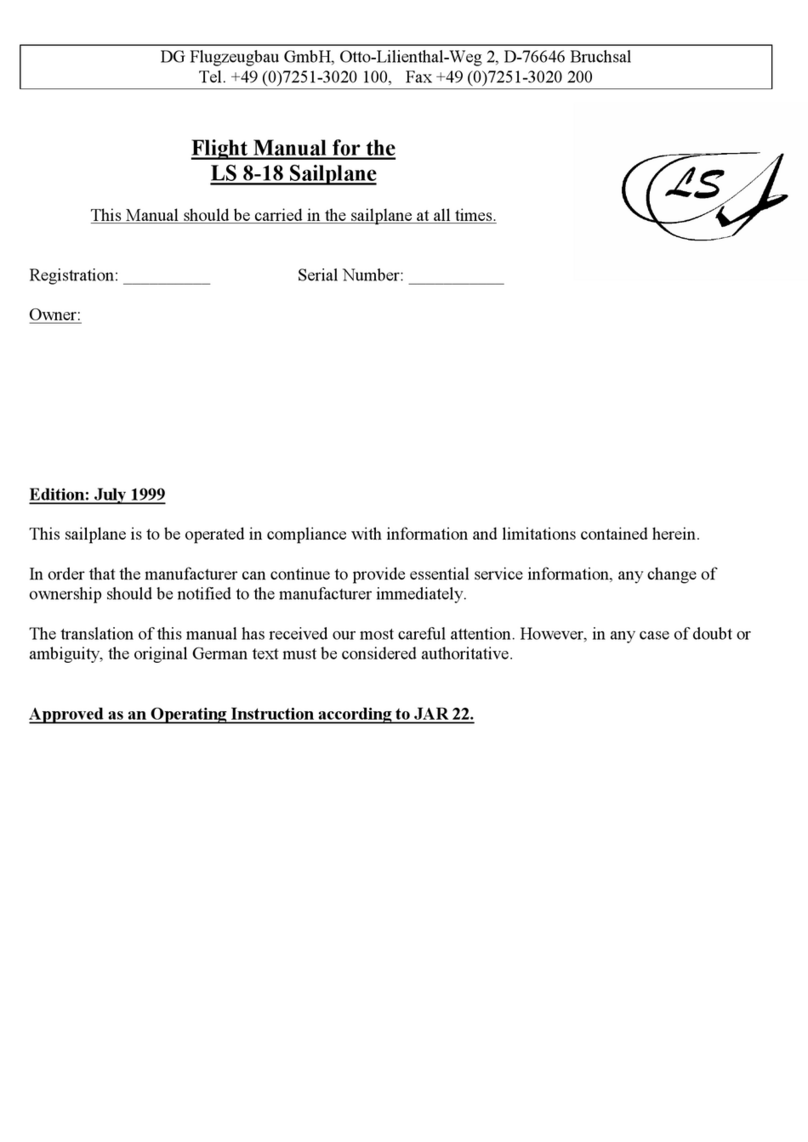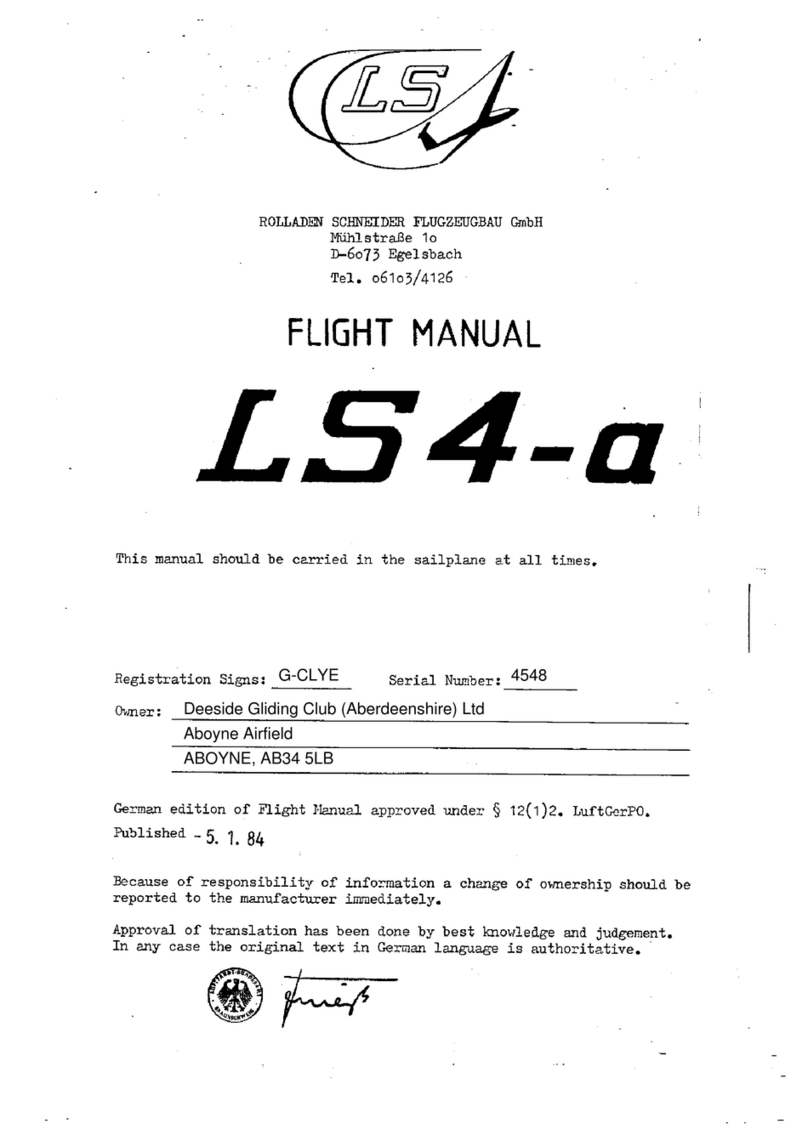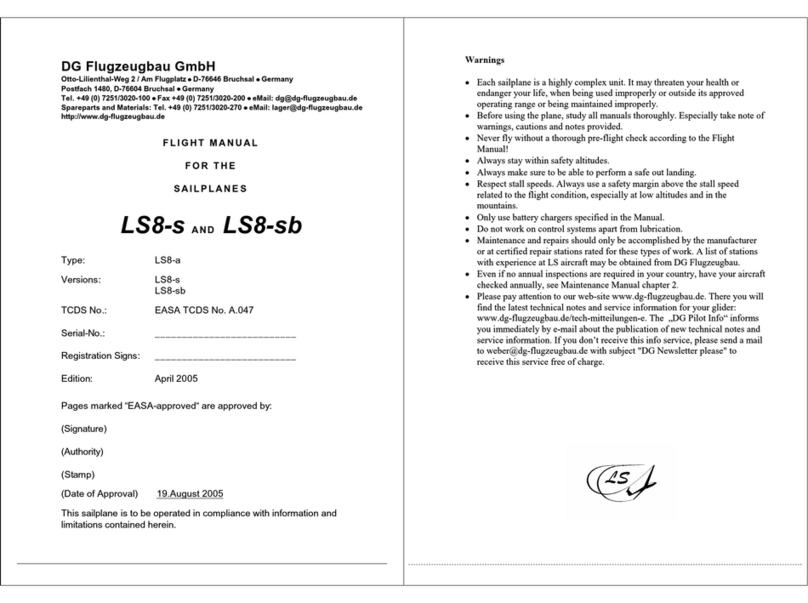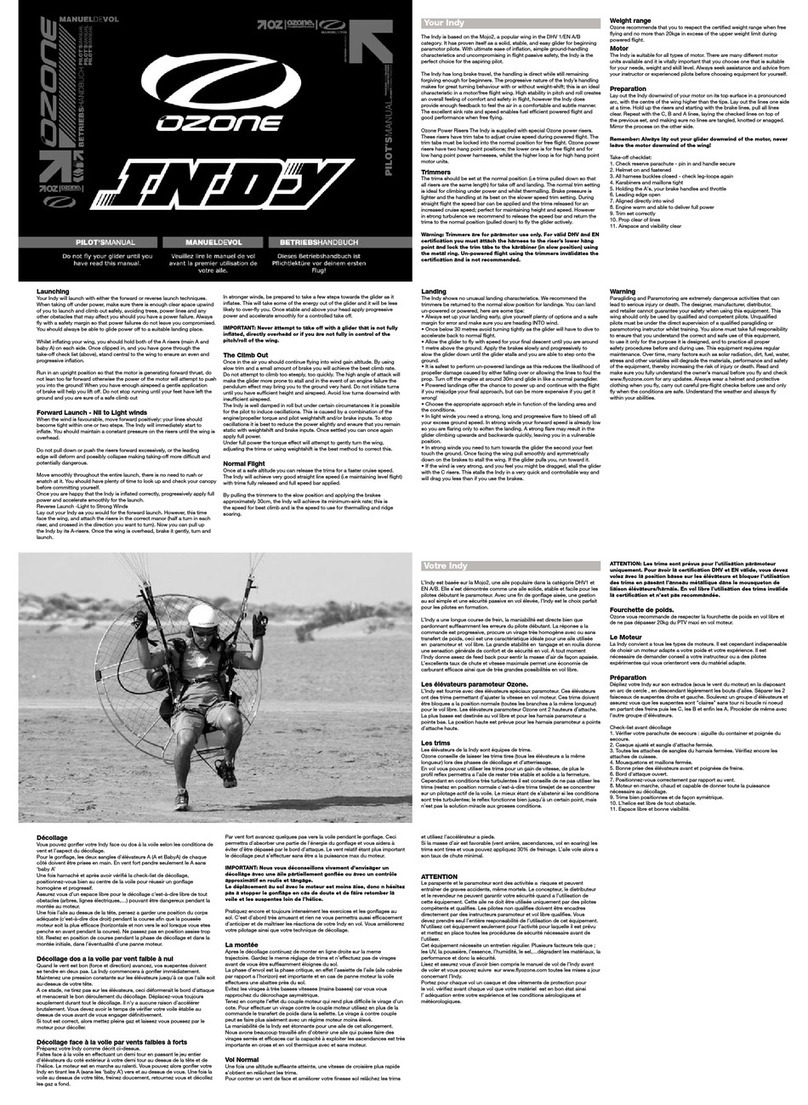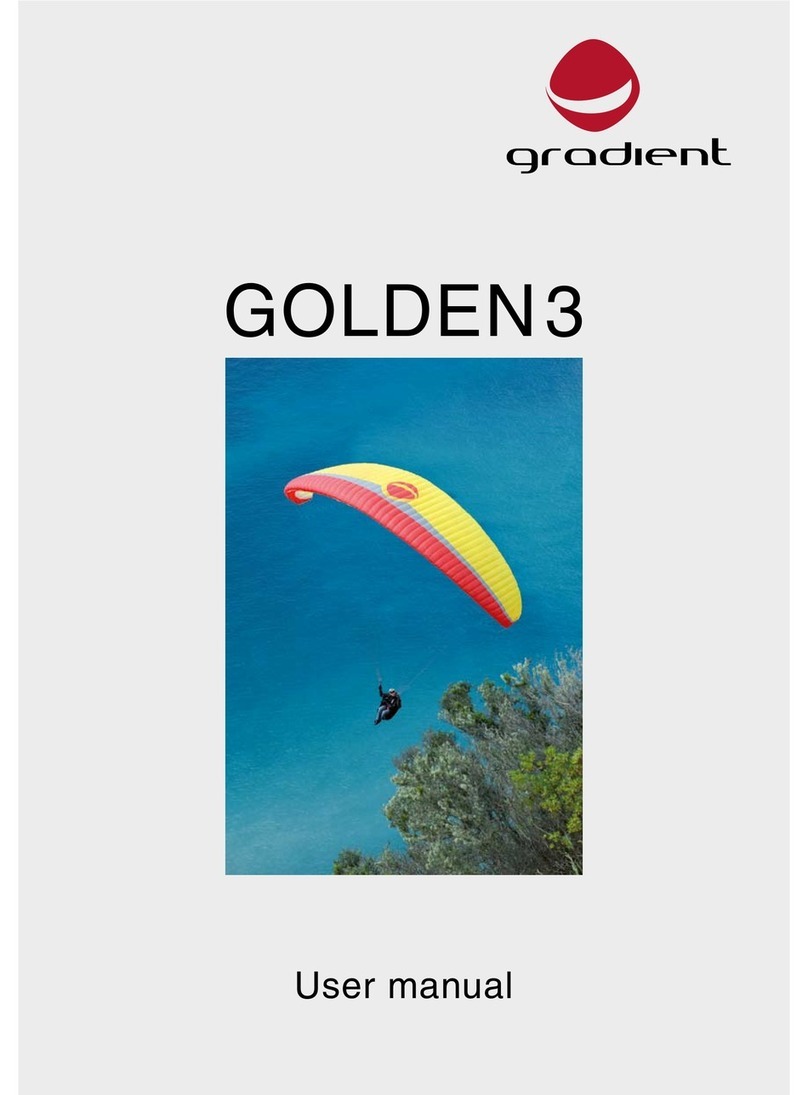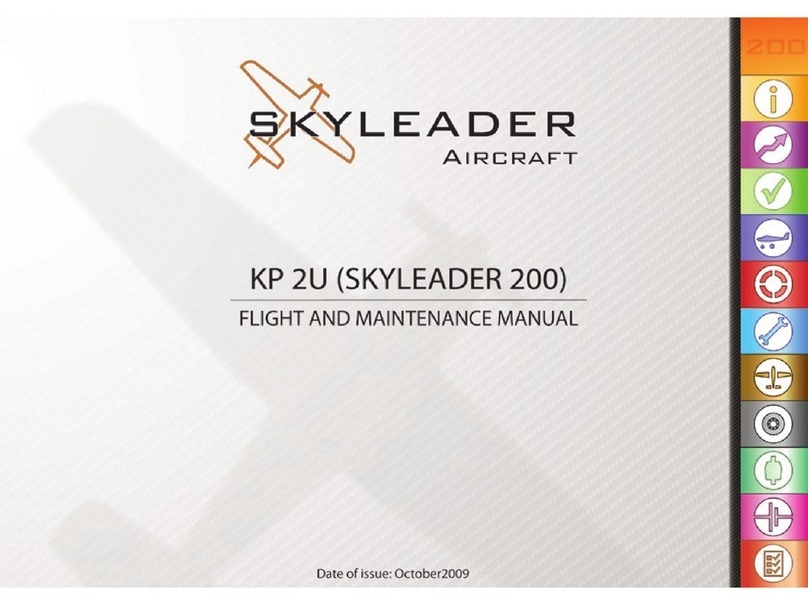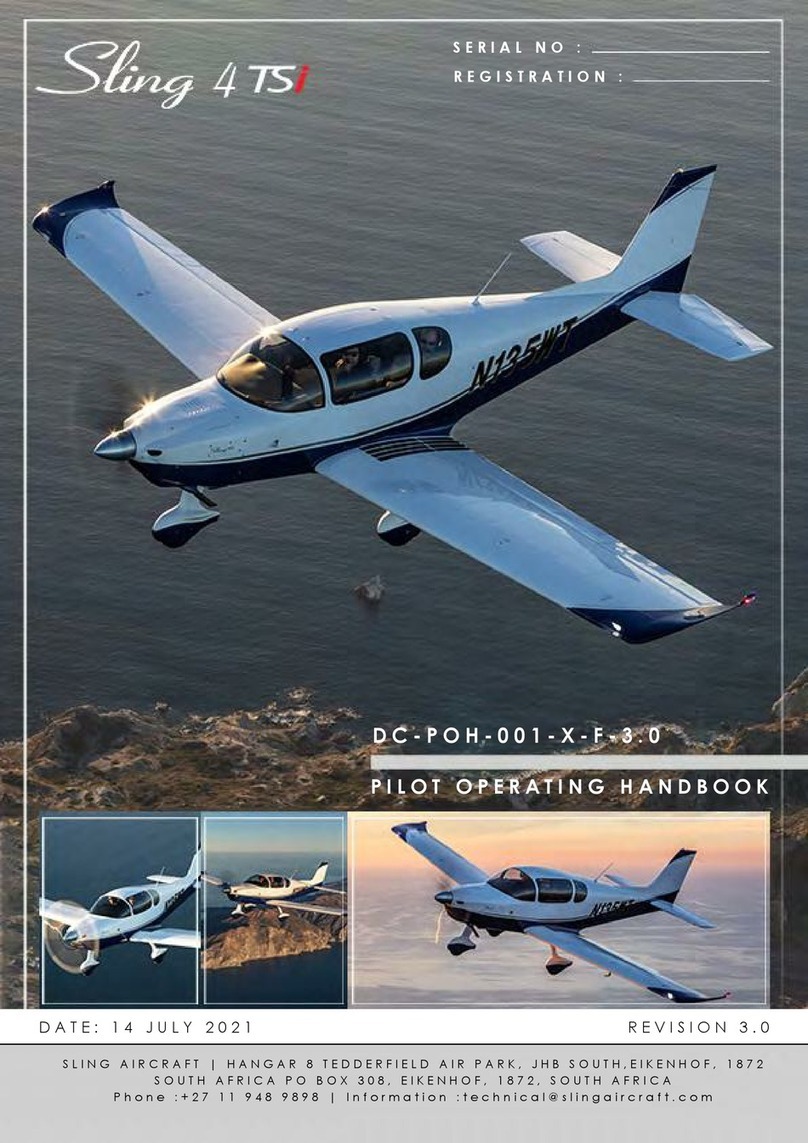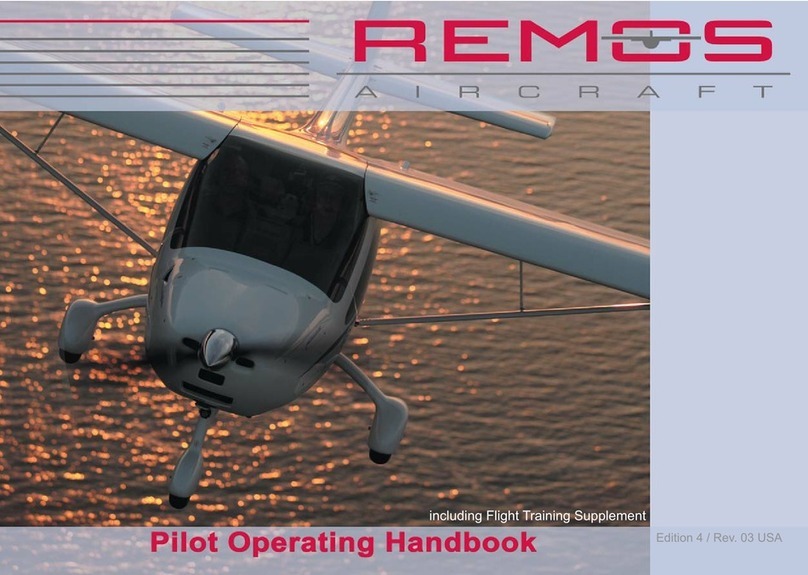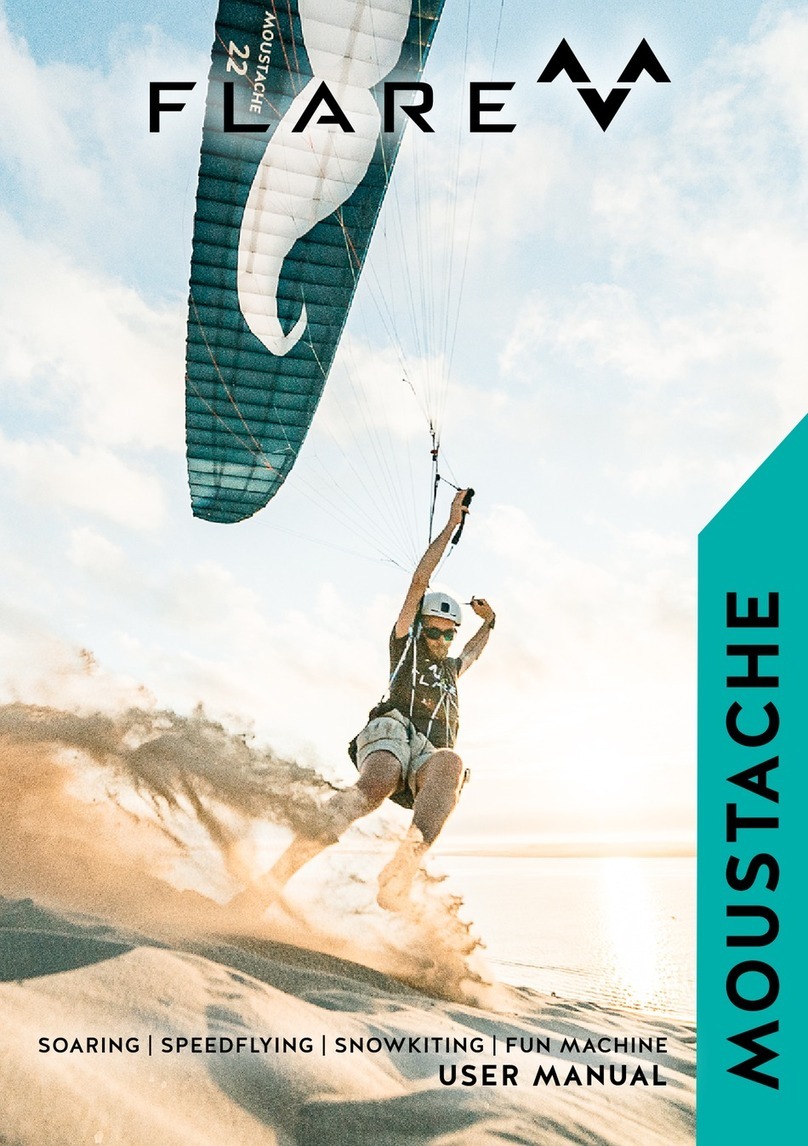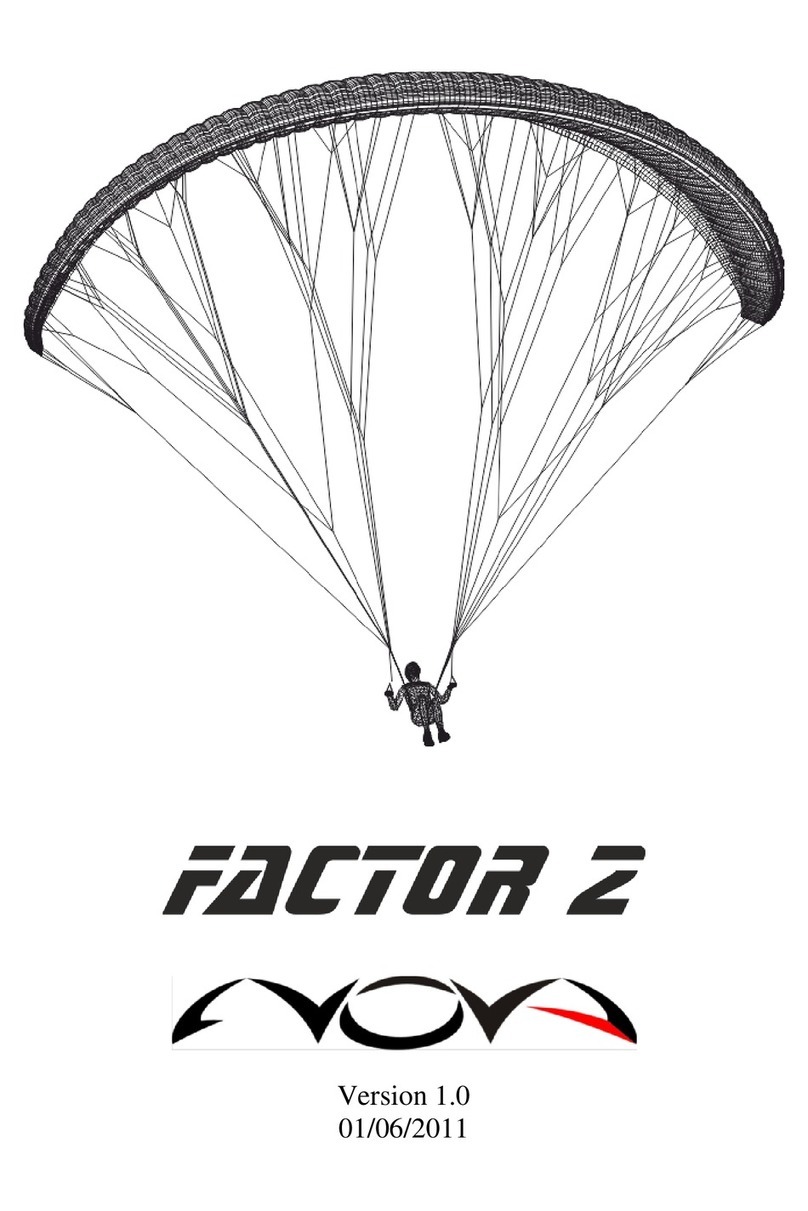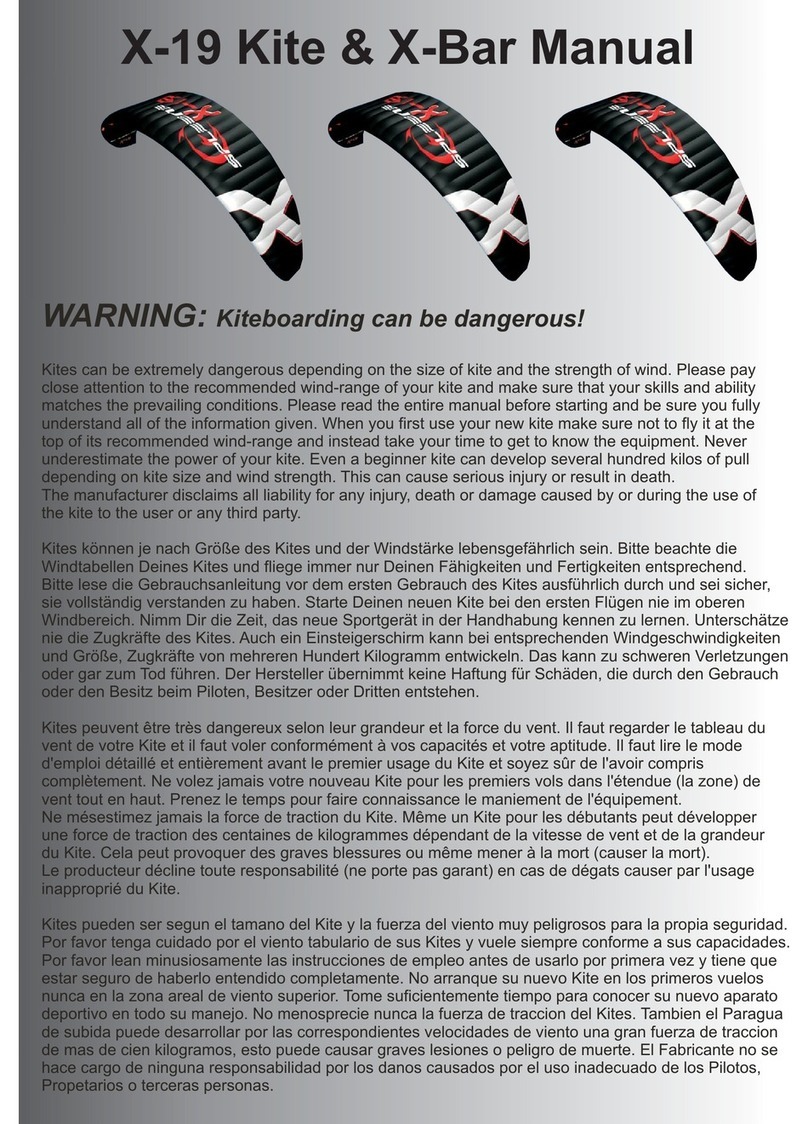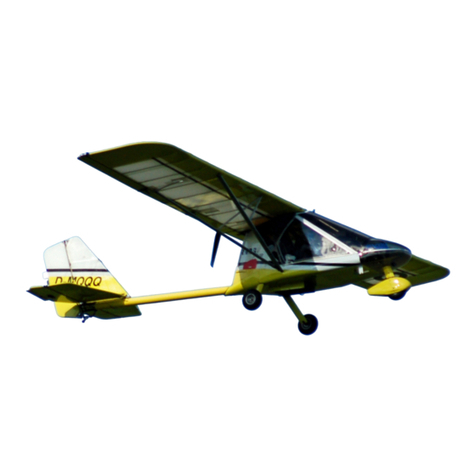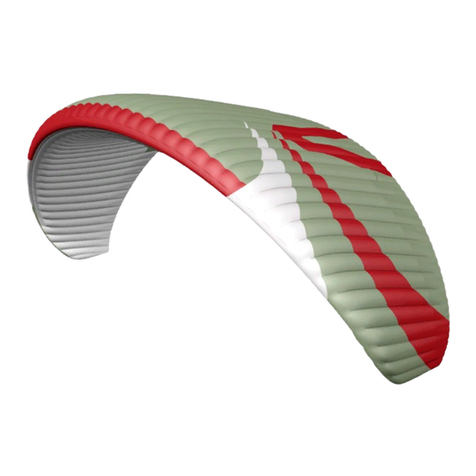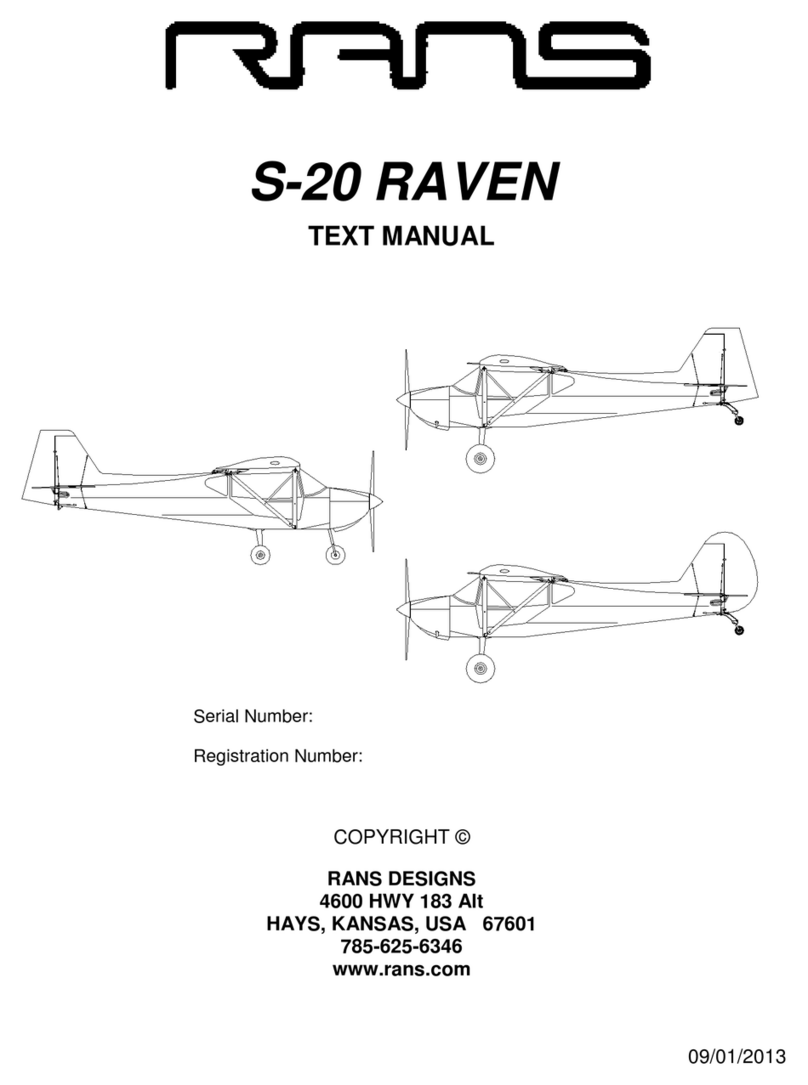Rolladen-Schneider LS7 WL VH-XJB Owner's manual

LS7 Pilot notes Page 1 of 10
LS7 WL, VH-XJB
INFORMATION FOR PILOTS
John Hudson
(Revised April 2017)
TABLE OF CONTENTS
1. General Information/Specifications
2. Handling Notes
3. Technical Details
4. Daily Inspection
5. Water Ballast System
The LS-7 is a T-tail, Standard Class, single seat sailplane with winglets. It is capable
of carrying water ballast in the wings and tailfin. It has a retractable, sprung landing
gear and upper wing surface airbrakes. The LS7 was designed by Walter Lemke
and produced by Rolladen-Schneider GmbH. Carbon fibre was used extensively in
its construction. The LS7 was manufactured from 1988 to 1993 with 164 aircraft
produced.
1. GENERAL INFORMATION/SPECIFICATIONS
VH- XJB
Serial No. 7069
Wing Span
15 m (49.21 Ft)
Length
6.66 m (21.84 Ft)
Height
1.33 m (4.36 Ft)
Wing Area
9.73 m2(104.8 Ft2)
Wing Aspect Ratio
23.1
Empty weight
235 Kg
Max Gross Wt
486 Kg (1071 Lbs)
Max Wing Loading
50 Kg/m2(10.2 Lbs/Ft2)
Aerofoil
Wortmann modified.
Glide Ratio
43:1 at 57 Kts
Electronic Audio Vario
Borgelt B100
Mechanical Vario
Winter
Radio
Xcom VHF Radio
Air Speed Indicator
Small Winter
Altimeter
Winter
Water Ballast
50 L (each) wing bags / 5.5 L tail tank
1.1 Undercarriage Warning
This aircraft is not fitted with an undercarriage warning.

LS7 Pilot notes Page 2 of 10
1.2 Flight Computer
The LS4 7 is fitted with an LX-NAV LX8000 flight computer. Consult the
manual for instructions on its use.
1.3 Air Brakes
A. The airbrakes have an over-centre lock to lock them closed.
B. There is another over-centre lock to lock them fully open.
C. The airbrakes should be unlocked when hangared.
1.4 Wheel Brake
A. The wheel brake is operated by "heel brake" pedals located in the
rudder pedal assembly. The wheel brake is very effective.
B. Care must be exercised to ensure the wheel brake is not
(unconsciously) on at the point of landing –Ensure your heels are not
applying the brake.
C. The wheel brake should be operated cautiously to avoid tipping the
glider onto its nose.
1.5 Canopy
A. The canopy is hinged at the front and opens upward and is secured in
the "closed" position by 2 levers, one either side of the canopy.
B. The right-hand side lever also act as "canopy jettison" levers.
C. To OPEN canopy
i. Pull both levers back to unlock.
ii. Push canopy up from the back.
D. To Jettison Canopy
i. Pull both handles back to the stops.
ii. The right-hand side lever has longer travel and requires additional
force to reach the stop.
E. Do not force the canopy closed. If it is difficult to close, there is
something obstructing it (Pee tube, Seat Belt etc).
F. Do not lift the canopy by the vent window opening, use the handles
provided.
1.6 Pee Tube
The glider is fitted with a "Pee Tube". If you use this, please flush it after the
flight.
1.7 Water Ballast
A. The water ballast system consists of a "bag" in each wing and tail tank.
B. Consult the "Water Ballast" chart to determine the maximum water
ballast which may be carried.
C. The ballast tanks, including the tail tank, are "bottom" filled.
D. Hoses, funnels etc for filling are stored on a board in the main hangar.
E. It is necessary to withdraw air from the wing bags before filling.

LS7 Pilot notes Page 3 of 10
F. For each 10 Kg of pilot weight above 70 Kg, 1 litre of water may be
added to the tailfin tank.
1.8 Tools
A. Tail Plane Attachment Nut Tool,
i. Located in cockpit sidewall pocket.
ii. Used to secure the Tailplane attachment Nut.
iii. Do not use excessive force.
B. Water Ballast Tool
iv. Located in cockpit sidewall pocket.
v. May also be used to undo / tighten pilot seatback attachment
screw (when shifting seat back).
1.9 Seat Back
The pilot seat back is adjustable –control on right side of cockpit wall. The
seat back also has several location points, enabling pilots to move the
seatback forward or back to achieve the optimum position.
1.10 Winglets
A. The LS7 is fitted with "winglets".
B. To remove winglets:
i. Remove the "tape" on the top side and bottom side of the wings
to allow access to the winglet securing pins.
ii. Push the winglet securing pins out.
iii. Place winglet pins into the holes in the winglet.
Side-slipping with winglets is PROHIBITED.
1.11 Trailer
A. XJB trailer is a "Cobra style" copy, of the clamshell configuration.
B. The trailer is fitted with brakes and a standard 7 pin plug for lights etc.
C. The spare tyre is located under the trailer floor, immediately behind the
axle.
D. The Tailplane and winglets are stowed in the "lid" of the trailer.
E. Wing dollies and a fuselage dolly carry the wings and fuselage
respectively.
F. An extendable track, to allow the fuselage to be lowered to ground
level, is included in the trailer. This extendable track is fitted with a jack,
to allow the height to be adjusted.
G. It is normally necessary to extend this jack to prevent the underside of
the nose of the glider fouling on the trailer as the fuselage is removed.
H. The wing and fuselage dollies should be secured in the trailer when the
trailer is empty.

LS7 Pilot notes Page 4 of 10
2. PILOT HANDLING NOTES
2.1 Ground Handling
A. Secure the control stick with the seat belt harness while ground towing
to minimize elevator deflection and component wear.
B. Use Wing-walker, Tail-dolly and tow bar.
C. Avoid handling the ailerons. The foam sandwich is pressure sensitive
and is easily deformed.
D. Ensure the canopy is closed and locked for all ground-handling activity.
2.2 Flight Preparation
A. Minimum Cockpit Load is 70 Kg.
i. Ballast weights can be fitted in the nose ahead of the rudder
pedals.
ii. 1 X 2.5 Kg ballast weight = 5 Kg of Pilot weight.
B. Maximum Cockpit load is 112 Kg.
C. Batteries installed and connected.
2.3 Takeoff
CHAOTIC checks completed.
Controls, full and free movement.
Harness, Secure
Airbrakes, closed and locked.
Outside, Wind, Obstructions, Crew, Options
Trim, set neutral.
Instruments, Set,
a) LX8000 - ON
b) Data Logger: ON
c) Radio: On
Canopy, Closed and locked.
2.4 Speeds
Stall Speed (approx) 70 Kg pilot
30 Kts
Stall Speed (approx) 100 Kg pilot
31 Kts
Stall Speed (approx) Max AUW
36 Kts
Safe Speed Near the Ground
55 Kts + ½ wind speed
Aerotow Speed (no Water Ballast)
Min 54 Kts
Aerotow Speed (with Water Ballast)
Min 65 Kts
Max Aerotow Speed
103 Kts
Winch Tow Speed
Max, 76 Kts
Rough Air Max
103 Kts
Vne
146 Kts

LS7 Pilot notes Page 5 of 10
2.5 Thermalling speeds
The LS7 performs better at higher than normal thermalling speeds when
compared to other standard class gliders.
2.6. Stall / Stall Recovery
Slight tail shudder prior to entry.
Stall Speed @ maximum weight, 486 Kg in straight flight, 36 Kts
During pronounced yawing, the forward facing wing will stall first, due to
winglets. Spinning may result.
Standard spin-recovery actions –opposite rudder, elevator nose down
until glider recovers.
NOTE: Sideslip with winglets fitted is prohibited.
2.7 Flying In Rain
Flight in rain will result in a considerable decrease in performance.
Increase speeds by 5 –6 Kts, including approach and landing speeds.
2.8 Landing Gear
Rapid operation eases retraction.
Operating handle in forward position, Gear Up.
Operating handle in rearward position, Gear Down.
When winch launching, retract landing gear only after tow cable is
released.
2.9 Weak Link
Aerotow - 500 Kg
Winch Tow 750 Kg (Recommended)
2.10 Demonstrated Crosswind Performance
During aerotow 11 Kts.
During winch launch 16 Kts

LS7 Pilot notes Page 6 of 10
3. TECHNICAL DETAILS
3.1. Speeds (IAS)
Vne, sea level –6500 ft
146 Kts
Vne, 6500 Ft –9800 ft.
139 Kts
Vne, 9800 Ft –13100 Ft
132 Kts
Vne, 13100 Ft –19700 Ft
118 Kts
Vne, 19700 Ft –26200 Ft
105 Kts
Vne, 26200 Ft –32800 Ft
93 Kts
Vra, Max. Rough Air Speed
103 Kts
Vw, Max Winch-tow speed
76 Kts
Vt, Max Aerotow speed
103 Kts
Vl, Max gear extension speed
146 Kts
Max Airbrake extension speed
146 Kts
3.2 Mass
Maximum T/O weight, with water
ballast
486 Kg (1071 Lbs)
Maximum T/O weight, without water
ballast
389 Kg (858 Lbs)
Maximum Landing weight
Maximum Wing Water Ballast
100 Kg (220 Lbs)
Maximum Tail-fin ballast
5.5 Kg (12 Lbs)
Maximum Cockpit Load
120 Kg ( 265 Lbs
Minimum Cockpit Load
70 Kg (154 Lbs)
Ballast Weights
1 X 2.5 Kg weight = 5 Kg of pilot weight
3.3 Tail Tank Limits
For each 10 Kg of pilot weight above 70 Kg, 1 litre may be added to the tail-fin
tank
Pilot weight, Kg
Tail tank, litres
80
1
90
2
100
3
110
4
3.4. Flight Load Limits
At 103 Kts 5.3 G positive, 2.65 G negative.
At 146 Kts 4.0 G positive, 1.5 G negative.

LS7 Pilot notes Page 7 of 10
3.5. Launch Method Weak Link
Aerotow; 550 Kg
Winch Launch; 825 Kg (Maximum); 750 Kg recommended in Club use.
3.6 Tyre Pressure
Main wheel
300-340 KPa (43-50 PSI)
Tail wheel
340 kPA (36-50 KPa)

LS7 Pilot notes Page 8 of 10
4. DAILY INSPECTION
4.1 Cockpit
A. Main Wing Pins, Secure
B. Instruments
C. Electrics, Radio Batteries installed / Connected / Secure.
D. Harness condition / security
E. Parachute / cushions available.
F. Canopy: attachment, locking mechanism, cleanliness
G. Cockpit Cleanliness.
H. Controls, Full, free and correct sense.
I. Thermometer (near landing gear handle) functioning, normal.
4.2 Left Wing; General Condition.
A. Gap Tape.
B. Airbrake box, Cap, extension, closing damper
C. Aileron, condition, gap tapes, secure.
D. Wingtip skid, condition, security
E. Water Ballast drains, clear.
4.3 Rear Fuselage
A. Rear Static Ports, clear.
B. Tailboom, condition, Tail skid / wheel assembly, Tyre Pressure.
C. Tailplane, security, gap tapes
D. Pitot Head, secure (lower)
E. Total Energy Head (upper), secure.
F. Water ballast drain, clear
4.4 Right Wing, General Condition
A. Gap Tape.
B. Airbrake box, Cap, extension, closing damper
C. Aileron, condition, gap tapes, secure.
D. Wingtip skid, condition, security
E. Water drains (root and tip) clear
4.5 Forward Fuselage
A. Forward Static Ports, Clear
B. Main Wheel, Tyre condition , Pressure,
C. Nose Release
D. Belly Release
E. Water ballast drains, clear
4.6 Cockpit
Maintenance Release completed.

LS7 Pilot notes Page 9 of 10
5 WATER BALLAST SYSTEM
5.1 Filling Sequence
Fill in the following sequence
A. Tail tank
B. Left Wing
C. Right Wing
5.2 OPEN" water dump valve - shift cockpit dump lever to the rearward
position. If the tail-fin tank is to be used, fill this tank first.
5.3 Connect tail-fin tank tube and funnel to tail-fin tank dump valve.
A. Move rudder left or right, observe valve with opening below rudder).
B. Place "Funnel" at the top of the rudder.
5.4 Fill tail-fin tank to the required amount, refer Loading Chart. Markings on
the translucent right rudder gap seal tape = 0.5 Litre each.
5.5 Use water level in fill tube to fill to the desired amount. The upper RED
marking correspond to maximum amount.
5.6 "CLOSE" water dump valve –shift cockpit dump lever to forward position.
Remove tube and funnel from tail-fin dump valve.
5.7 To Fill Left Wing bag
A. Open "left" wing dump valve through Baggage Compartment.
B. Suck residual air from the left wing bag - close dump valve before
stopping sucking –using hose connected to the under-wing dump
valve.
C. When air is removed, lay the left wing down, open dump valve and
supply ½ total wing water ballast via funnel, held maximum 1 metre
above the wing.
D. Close "left" wing dump valve and remove tube and funnel.
5.8 To Fill Right Wing bag
A. Open "right" wing dump valve through Baggage Compartment.
B. Suck residual air from the right wing bag - close dump valve before
stopping sucking –using hose connected to the under-wing dump
valve.
C. .When air is removed, lay the right wing down, open dump valve and
supply the other ½ of total water ballast amount via funnel, held
maximum 1 metre above the wing.
D. Close "right" wing dump valve and remove tube and funnel.
5.9 Warnings
A. Unequal water ballast amounts may promote ground-looping.
B. Check for proper water dump operation –Tail-fin dump must open
before wing dump valves to prevent rearward movement of C of G.

LS7 Pilot notes Page 10 of 10
5.10 Water Dumping
Water is dumped at a rate of approx 150 Litres in 4 Minutes.
To dump, OPEN cockpit dump lever –move lever to the most rearward
position.
Table of contents
Other Rolladen-Schneider Aircraft manuals
